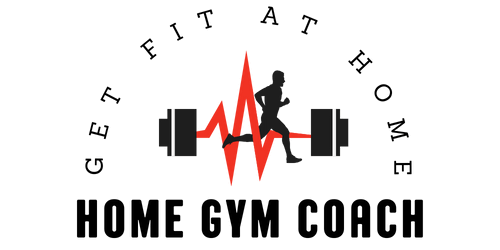Looking to get a great workout at home without the need for fancy equipment or expensive gym memberships? Look no further! In this article, we will explore the best bodyweight exercises that you can do in the comfort of your own home gym. Whether you’re a beginner or a seasoned fitness enthusiast, these exercises are guaranteed to challenge your muscles, improve your strength, and help you achieve your fitness goals. So, dust off that yoga mat and get ready to break a sweat as we uncover the secrets to an effective home workout routine.

Upper Body Exercises
Push-Ups
Push-ups are a classic exercise that targets your chest, shoulders, and triceps. They are highly effective for building upper body strength and can be done anywhere, making them perfect for a home gym workout. To perform a push-up, start in a high plank position with your hands slightly wider than shoulder-width apart. Lower your chest towards the ground while keeping your elbows close to your body, and then push back up to the starting position. If regular push-ups are too challenging, you can modify them by doing them on your knees or against a wall.
Pull-Ups
Pull-ups are an excellent exercise for developing your back, biceps, and shoulders. While they may be more challenging than other bodyweight exercises, they can be a great addition to your home gym workout routine if you have a pull-up bar or a sturdy doorframe to hang from. To perform a pull-up, hang from the bar with your palms facing away from you and your hands shoulder-width apart. Pull your body up towards the bar until your chin clears it, and then lower yourself back down with control.
Dips
Dips are a compound exercise that targets your chest, triceps, and shoulders. They can be performed using parallel bars, a dip station, or even the edge of a sturdy chair or countertop. To do a dip, start by gripping the bars or edges with your hands and extending your arms fully. Then, lower your body by bending your elbows and keeping your chest up. Once you reach a depth where your arms are parallel to the ground, push yourself back up to the starting position. Dips can be modified by bending your knees or by using assistance bands if needed.
Lower Body Exercises
Squats
Squats are a foundational lower body exercise that primarily targets your quadriceps, hamstrings, and glutes. They can be done with just your body weight or with added resistance using dumbbells or a barbell. To perform a squat, start with your feet shoulder-width apart, toes slightly turned out. From a standing position, lower your hips back and down as if you’re sitting into a chair. Keep your chest up and your weight in your heels as you descend. Once your thighs are parallel to the ground or lower, push through your heels to stand back up.
Lunges
Lunges are another effective lower body exercise that targets your quadriceps, hamstrings, glutes, and calves. They can be done with just your body weight or by holding dumbbells for added resistance. To do a lunge, start by taking a step forward with one leg, lowering your body until both knees are bent at 90-degree angles. Make sure your front knee is directly above your ankle and your back knee is hovering right above the ground. Push through your front heel to return to the starting position, and then repeat with the other leg.
Glute Bridge
The glute bridge is a great exercise for strengthening your glutes and hamstrings, while also engaging your core. To perform a glute bridge, lie flat on your back with your knees bent and your feet hip-width apart. Press your heels into the ground as you lift your hips off the floor, while squeezing your glutes at the top of the movement. Hold for a second, and then lower your hips back down to the starting position. To make this exercise more challenging, you can elevate your feet on a step or use a resistance band around your thighs.

Core Exercises
Plank
The plank is a fundamental core exercise that targets your abdominals, lower back, and obliques. To do a plank, start in a high plank position with your hands directly under your shoulders and your toes on the ground. Engage your core, squeeze your glutes, and keep your body in a straight line from head to toe. Hold this position for as long as you can while maintaining proper form. If planking on your hands is too challenging, you can also perform a plank on your forearms.
Crunches
Crunches are a classic core exercise that primarily engage your rectus abdominis, commonly known as the six-pack muscles. Lie flat on your back with your knees bent and your feet flat on the ground. Place your hands behind your head, and with your chin tucked, use your abdominal muscles to curl your upper body off the ground. Exhale as you crunch up, and then lower yourself back down with control. Remember to keep your lower back glued to the ground throughout the movement to avoid strain.
Russian Twists
Russian twists are an effective exercise for targeting your obliques, which are the muscles on the sides of your abdomen. To perform a Russian twist, start by sitting on the ground with your knees bent and your feet raised off the floor. Lean back slightly while keeping your back straight and your core engaged. Holding a weight or medicine ball, twist your torso from side to side, touching the weight to the ground on each side. Make sure to keep your abdominal muscles contracted throughout the movement and maintain a steady breathing pattern.
Full Body Exercises
Burpees
Burpees are a full body exercise that combines strength and cardiovascular fitness. They target multiple muscle groups, including your chest, shoulders, arms, legs, and core. To perform a burpee, start in a standing position. Then, lower yourself into a squat and place your hands on the ground in front of you. Kick your feet back into a plank position, do a push-up, and then jump your feet back up towards your hands. Finally, explode up into a jump, reaching your arms overhead. Burpees can be modified by stepping back instead of jumping and eliminating the push-up if needed.
Mountain Climbers
Mountain climbers are a dynamic exercise that engages your core, shoulders, and legs. To perform mountain climbers, start in a high plank position with your hands directly under your shoulders and your body in a straight line. Bend one knee and bring it towards your chest, and then quickly switch legs, as if you’re running in place. Maintain a fast and controlled pace while keeping your core engaged. Mountain climbers can be modified by slowing down the movement or by placing your hands on an elevated surface, such as a bench or chair.
Jumping Jacks
Jumping jacks are a classic exercise that elevates your heart rate and engages multiple muscle groups throughout your entire body. To perform a jumping jack, start in a standing position with your feet together and your arms by your sides. Jump your feet out wide while simultaneously raising your arms overhead. Then, quickly jump back to the starting position, bringing your feet together and lowering your arms. Repeat this movement, focusing on maintaining a steady rhythm and breathing throughout.

Cardio Exercises
High Knees
High knees are a dynamic cardio exercise that elevates your heart rate, improves coordination, and engages your core and leg muscles. To perform high knees, stand with your feet hip-width apart. Drive one knee up towards your chest while hopping off the ground with the other foot. Switch legs quickly, maintaining a fast and controlled pace. Pump your arms in sync with your legs to maximize the intensity of the exercise. High knees can be modified by marching in place with exaggerated knee lifts if the jumping motion is too demanding.
Jumping Rope
Jumping rope is a classic cardio exercise that can improve your cardiovascular endurance and coordination. All you need is a skipping rope and some space to jump. Start by holding the handles of the rope, and with your arms by your sides, swing the rope over your head and jump over it as it reaches your feet. As you progress, you can try different variations, such as alternating feet, speed jumps, or double unders. Jumping rope is an efficient and fun way to get your heart rate up without needing a lot of space or equipment.
Sprint Interval Training
Sprint interval training is a high-intensity cardio exercise that can be done outdoors or on a treadmill. Start by sprinting as fast as you can for a short duration, around 20-30 seconds. Follow this with a rest or active recovery period of 30-60 seconds, either by walking or jogging slowly. Repeat this cycle for several rounds, aiming for a total workout time of 10-15 minutes. Sprint intervals are highly effective for improving your cardiovascular fitness and burning calories in a short amount of time.
Strength Exercises
Wall Sit
The wall sit is an isometric exercise that targets your quadriceps, hamstrings, and glutes. To perform a wall sit, stand with your back against a wall and your feet hip-width apart. Slide your back down the wall until your thighs are parallel to the ground, as if you are sitting on an invisible chair. Your knees should be directly above your ankles, and your lower back should be pressed against the wall. Hold this position for as long as you can, focusing on keeping your core engaged and your weight in your heels.
Chair Pose
Chair pose, also known as Utkatasana, is a yoga-inspired exercise that strengthens your legs, core, and upper body. Start by standing with your feet together and your arms at your sides. Bend your knees and lower your hips back and down as if you’re sitting into a chair. Extend your arms out in front of you, keeping your chest lifted and your gaze forward. Make sure to distribute your weight evenly between your heels and engage your core to maintain stability. Hold this pose for several breaths, gradually increasing the duration as you build strength.
Single-Leg Deadlift
The single-leg deadlift is a challenging exercise that targets your hamstrings, glutes, and lower back, while also improving your balance and stability. Stand tall with your feet hip-width apart and slightly bend one knee. Shift your weight onto one leg, and while keeping your back straight, hinge at the hips and reach your opposite hand towards the ground. Lift your non-weight-bearing leg behind you for balance, and focus on keeping your core engaged and your standing leg slightly bent. Return to the starting position and repeat on the other leg.
Balance and Stability Exercises
Bird Dog
Bird dog is a core exercise that focuses on improving balance, stability, and coordination. Start on all fours with your hands directly under your shoulders and your knees under your hips. Extend your right arm forward while simultaneously extending your left leg back, keeping them aligned with your spine. Engage your core and hold this position for a few seconds, making sure to keep your neck neutral and your hips level. Repeat on the other side, alternating between extending opposite arm and leg while maintaining balance.
Single-Leg Balance
Single-leg balance is a simple yet effective exercise for improving your stability and coordination. Stand tall with your feet hip-width apart and lift one foot off the ground, balancing on the other leg. Find a focal point to gaze at and engage your core to maintain stability. Start by holding this position for a few seconds and gradually increase the duration as you become more comfortable. For an added challenge, you can try closing your eyes or performing additional movements, such as reaching your arms overhead or bending the standing leg slightly.
Side Plank
The side plank is a challenging exercise that targets your obliques, shoulders, and hips, while also improving your core stability. Start by lying on your side with your legs stacked on top of each other and your forearm directly under your shoulder. Lift your hips off the ground, creating a straight line from your head to your feet. Engage your core and hold this position for as long as you can while maintaining proper form. Repeat on the other side, balancing your body weight on the opposite forearm.
HIIT Exercises
Tabata Training
Tabata training is a type of high-intensity interval training (HIIT) characterized by short bursts of intense exercise followed by brief periods of rest. The typical Tabata protocol consists of 8 rounds of 20 seconds of work followed by 10 seconds of rest, totaling 4 minutes. You can choose any exercise, such as burpees, squats, or mountain climbers, and perform it with maximum effort during the work intervals. Tabata training is an efficient way to improve your cardiovascular fitness, burn calories, and boost your metabolism.
Interval Circuit Training
Interval circuit training involves performing a series of exercises with short rest intervals in between. You can create your own circuit by choosing a combination of strength and cardio exercises and performing each one for a set amount of time, such as 30 seconds, before moving on to the next exercise. Rest for a short duration, around 10-15 seconds, before starting the next exercise. Repeat the circuit for several rounds, aiming for a total workout time of 20-30 minutes. Interval circuit training is an effective way to challenge your entire body and keep your heart rate elevated.
EMOM (Every Minute on the Minute)
EMOM, short for Every Minute on the Minute, is a form of interval training where you perform a specific exercise or set of exercises at the start of every minute for a predetermined number of minutes. For example, you might set a timer for 10 minutes and perform 10 push-ups at the start of each minute. Once you complete the designated exercises, rest for the remainder of the minute before starting again. EMOM workouts can be customized to your fitness level and goals and are an excellent way to challenge yourself and improve your overall conditioning.
Plyometric Exercises
Box Jumps
Box jumps are explosive plyometric exercises that target your lower body, particularly your quadriceps, hamstrings, and glutes. Find a sturdy box or platform of an appropriate height and start with your feet shoulder-width apart. Bend your knees and swing your arms back, then explosively jump onto the box, landing with your knees slightly bent. Step or jump back down to the starting position and repeat for the desired number of repetitions. Make sure to focus on landing softly and quietly to minimize the impact on your joints.
Squat Jumps
Squat jumps are another plyometric exercise that engages your legs, glutes, core, and cardiovascular system. Begin by standing with your feet shoulder-width apart and your toes slightly turned out. Lower your body into a squat position, keeping your chest up and your weight in your heels. Explosively jump up as high as you can, extending your hips and swinging your arms for additional power. Land softly back into the squat position and immediately repeat the movement. Squat jumps are a high-intensity exercise that can help improve your power, explosiveness, and overall athleticism.
Tuck Jumps
Tuck jumps are an advanced plyometric exercise that requires good lower body strength and explosiveness. Begin by standing with your feet hip-width apart. Lower your body into a quarter squat and explosively jump as high as you can. As you reach the highest point of your jump, bring your knees up towards your chest, tucking them in tightly. Extend your legs straight back out and land softly, immediately going into the next repetition. Tuck jumps require coordination, power, and core strength, so make sure to start with caution and progress gradually.
Flexibility Exercises
Downward Dog
Downward dog is a yoga pose that stretches and lengthens your entire body, targeting your hamstrings, calves, shoulders, and upper back. Start on all fours with your hands slightly in front of your shoulders. Lift your hips up towards the ceiling, forming an inverted V shape with your body. Press your heels towards the ground, feeling the stretch in your hamstrings and calves. Relax your neck and let your head hang between your arms. Hold this position for several breaths, focusing on lengthening your spine and breathing deeply.
Seated Forward Bend
The seated forward bend, also known as Paschimottanasana in yoga, is a relaxing stretch that targets your hamstrings, lower back, and shoulders. Begin by sitting tall on the ground with your legs extended in front of you. Keep your spine straight as you hinge at the hips and reach forward, aiming to touch your toes or grasp your shins. If you’re unable to reach your feet, you can use a strap or towel around the soles of your feet to aid in the stretch. Breathe deeply and try to relax into the stretch, allowing your body to gradually release tension.
Butterfly Stretch
The butterfly stretch, or Baddha Konasana, is a rejuvenating exercise that stretches your inner thighs, groin, and lower back. Start by sitting tall on the ground and bring the soles of your feet together, allowing your knees to fall out to the sides. Use your hands to gently press down on your thighs, encouraging them towards the ground. If you feel any discomfort in your knees, you can place blocks or pillows under your thighs for support. Stay in this position for several breaths, focusing on relaxing your muscles and deepening the stretch over time.
By incorporating these bodyweight exercises into your home gym workout routine, you can effectively train your entire body and achieve your fitness goals. Whether you’re targeting specific muscle groups, improving your cardiovascular fitness, enhancing your balance and stability, or increasing your flexibility, there are a wide variety of exercises to choose from. So, lace up your workout shoes, create a comfortable space at home, and get ready to break a sweat while enjoying the convenience and effectiveness of bodyweight training. Remember to listen to your body, start at a comfortable level, and gradually increase the challenge as you become stronger and more confident. With consistency and dedication, you’ll be well on your way to a healthier, fitter you.


